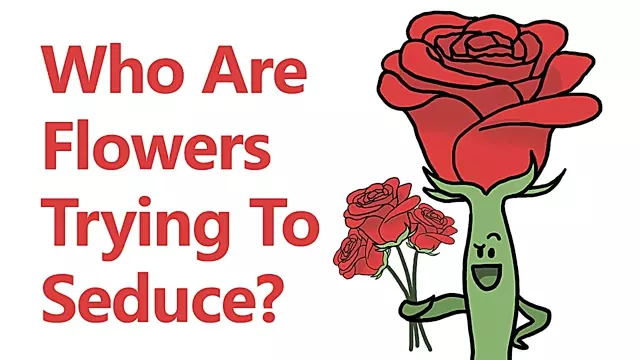2016-03-10
[public] 648K views, 14.2K likes, dislikes audio only
Snap some photos of flowers, guess who or what pollinates them and post to social media using #FlowerSeduction
Thanks also to our supporters on https://www.patreon.com/minuteearth :
- Today I Found Out
- Maarten Bremer
- Jeff Straathof
- Mark Roth
- Tony Fadell
- Muhammad Shifaz
- 靛蓝字幕组
- Maletendo Bezenga
- Duhilio Patiño
- Alberto Bortoni
- Valentin
- Nicholas Buckendorf
- Antoine Coeur
___________________________________________
ALSO check out these amazing time-lapse videos that entranced the entire MinuteEarth team during the making of this video:
And this article on Water Pollinated Plants
Want to learn more? Here are some keywords to get your googling started:
– Pollination: the process by which pollen is transferred to the female reproductive organs of seed plants
– Pollinator: the agent that moves the pollen
– Abiotic pollination syndromes: wind pollination (anemophily) and water pollination (hydrophily)
– Self-pollination: when pollen from the same plant arrives at the stigma of a flower (in flowering plants) or at the ovule (in gymnosperms)
– Stamen: the male fertilizing organ of a flower, typically consisting of a pollen-containing anther and a filament.
– Carpel: The female reproductive organ of a flower, consisting of an ovary, a stigma, and usually a style.
– Perfect flower: a flower that has both stamens and carpels. Also called bisexual, androgynous, hermaphroditic and monoclinous.
– Monoecious: having male and female reproductive structures in separate flowers on the same plant.
– Dioecious: having the male and female reproductive structures on separate plants.
– Nectar guides: markings or patterns seen in flowers of some angiosperm species that guide pollinators to their rewards.
– Some species featured in this video: common holly (Ilex aquifolium), stinking corpse lily (Rafflesia arnoldii), carrion fly (Calliphoridae), night blooming cereus, Massonia depressa, Symphyotrichum lanceolatum
___________________________________________
Credits:
Script Writer: Kate Yoshida (twitter: @KateYoshida)
Script Editor: Alex Reich (twitter: @alexhreich)
Video Illustrator: Ever Salazar (twitter: @eversalazar)
Video Director: Emily Elert (twitter: @eelert)
With Contributions From: Henry Reich (twitter: @minutephysics) and Peter Reich
Music by: Nathaniel Schroeder: http://www.soundcloud.com/drschroeder
_________________________________________
Like our videos?
Subscribe to MinuteEarth on YouTube: http://goo.gl/EpIDGd
Get early access to all of our videos on Vessel: https://goo.gl/hgD1iJ
Support us on Patreon: https://goo.gl/ZVgLQZ
Also, say hello on:
Facebook: http://goo.gl/FpAvo6
Twitter: http://goo.gl/Y1aWVC
And find us on itunes: https://goo.gl/sfwS6n
________________________
Image Credits:
Rafflesia arnoldi - Wikimedia user: Rendra_Regen_Rais
Potentilla intermedia L. - Bjørn Rørslett (used with permission)
________________________
References:
Cox, P. (1993 October). Water Pollinated Plants. Scientific American, 269(4): 68-74
Johnson, S.D. et al. (2001). Rodent pollination in the African lily Massonia depressa (Hyacinthaceae). American Journal of Botany, 88: 1768–1773
Leonard, A.S. & Papaj, D.R. (2011) ‘X’ marks the spot: the possible benefits of nectar guides to bees and plants. Functional Ecology, 25: 1293– 1301
Lunau, K. et al. (2011). Avoidance of achromatic colours by bees provides a private niche for hummingbirds. Journal of Experimental Biology, 214: 1607–1612
Reed, S. et al. (1998). Pollination of Rafflesia (Rafflesiaceae). American Journal of Botany, 75(8): 1148-1162
Rodriguez-Girones, M.A., Santamaria, L. (2004). Why are so many bird flowers red? PLoS Biology, 2:e350
Rosas-Guerrero, V. et al. (2014). A quantitative review of pollination syndromes: do floral traits predict effective pollinators? Ecology Letters, 17: 388–400
Schiestl, F.P. & Dotterl, S. (2012) The evolution of floral scent and olfactory preferences in pollinators: coevolution or pre-existing bias? Evolution, 66: 2042–2055
https://www.patreon.com/minuteearth
/youtube/channel/UCeiYXex_fwgYDonaTcSIk6w
https://www.patreon.com/minuteearth
/youtube/video/4DF94Wvtekk

